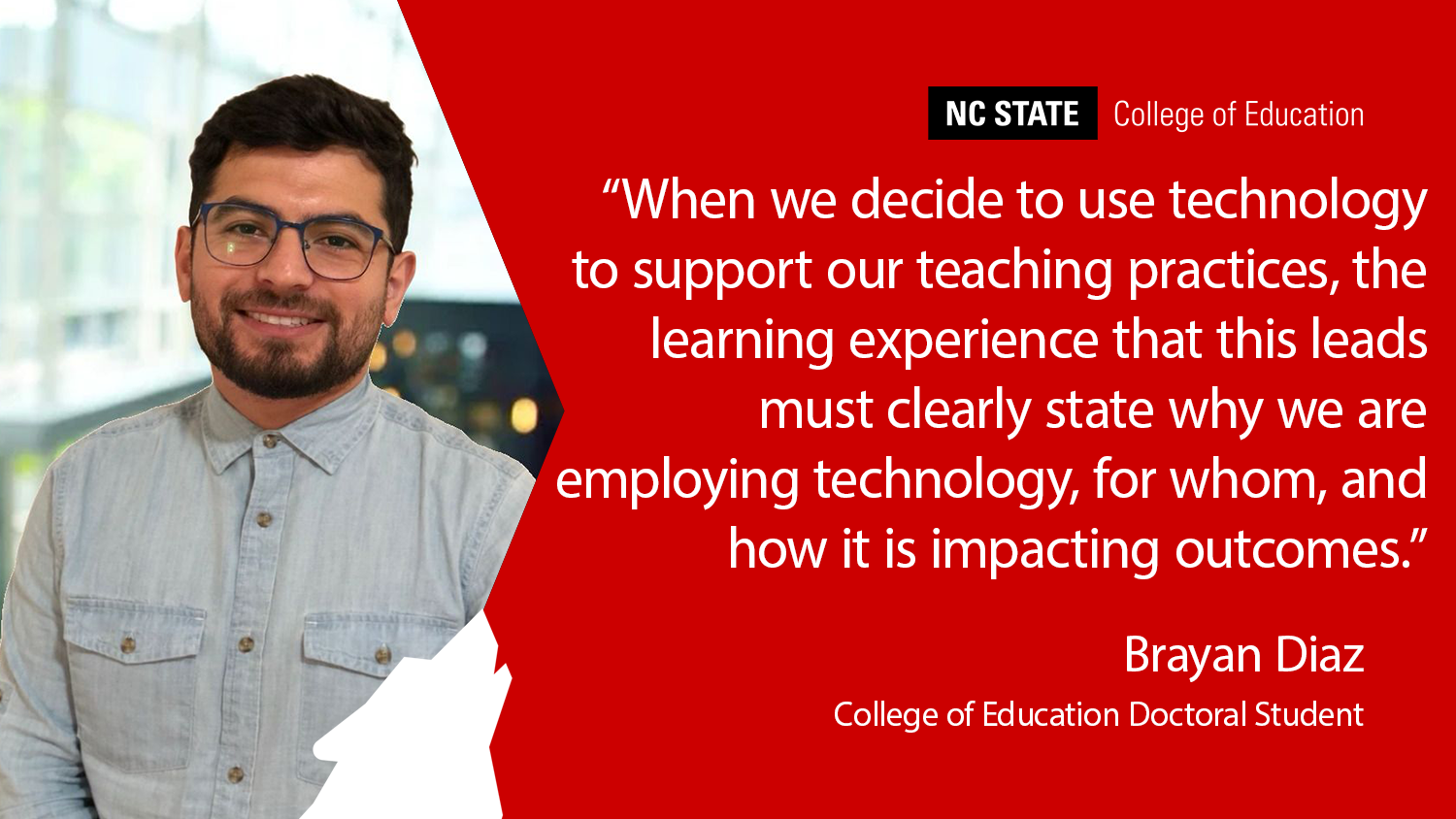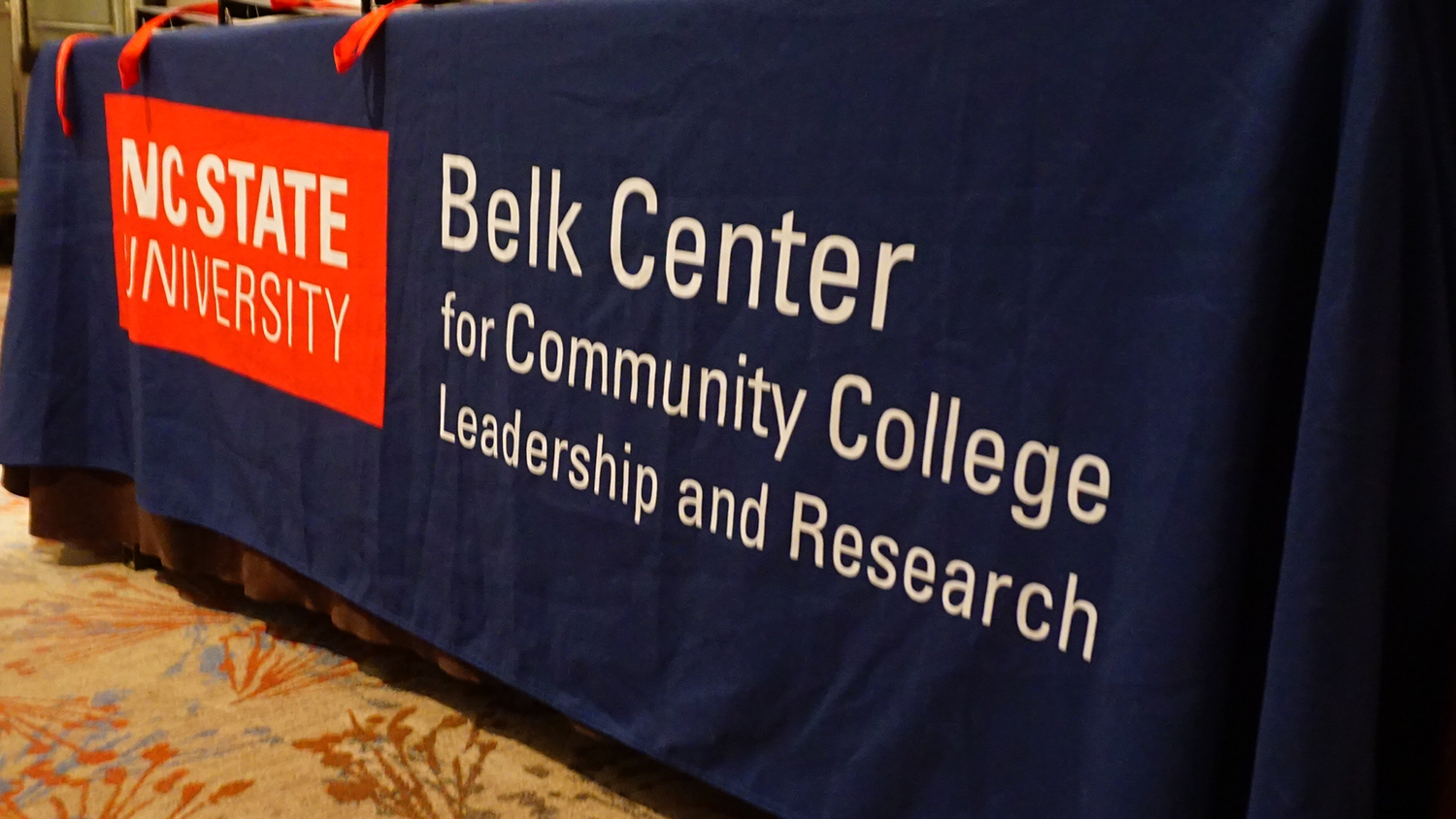Doctoral Student Brayan Diaz Explores Benefits of Screen-based vs. Paper-based Literacy Learning in Recently Published Article

As a native of Chile, Brayan Diaz, a student and Fullbright Scholar in the NC State College of Education’s Learning and Teaching in STEM science education concentration, struggled to help his son with basic aspects of early literacy in the United States as he himself was still learning English.
To remedy this issue, Diaz drew on his expertise in technology education to support his child’s learning. At the same time, he had an opportunity to return to Chile with a delegation of College of Education faculty, staff and students, where he engaged with Associate Professor Dennis Davis about early literacy and Goodnight Distinguished Professor in Educational Equity Maria Coady about multilingual education.
These experiences converged with learning about a new Swedish policy advocating for a return to paper-based teaching methods from digital ones and led Diaz to author “The role of technology in reading literacy: Is Sweden going back or moving forward by returning to paper-based reading?,” which was published in Computers & Education.
“Because I was looking and I found some very good examples of using technology to support my son’s reading, I felt the discussion [about the lack of benefits of digital learning for Swedish students] was not as complete, as they just focused on paper vs. screen without considering the pedagogical implications,” he said. “This is where it all started and ultimately led to the paper.”
The paper consists of four meta-analyses that indicate that while reading comprehension scores tend to be slightly higher in paper-based formats compared to those administered on digital devices, existing research does not consider how these differences in score might be correlated with demographic, socioeconomic and background variations.
The paper argues that before school systems make a decision to switch back to paper-based testing, further research into effective use of multimedia features in digital assessments and into the creation of assessment methods that ensure equity for all students must be conducted. Without this research, the paper states, the decision to revert to paper-based testing is premature.
“I think further research is needed to understand the role of technology in our classrooms, the long-term effects of hyper digitization in early education and the implicit biases inherent in the design and use of technology,” Diaz said. “While this paper primarily focuses on reading, we also tried to elevate the discussion beyond the mere medium of testing to explore the broader implications of standardized testing on young children.”
The paper also explores the effectiveness of using technology to teach reading comprehension, noting that existing research found a small positive impact on students’ reading comprehension when technology was integrated into reading tasks but also found a negative impact when technology was used as a reinforcement tool for instructional practices in reading.
Overall, the meta-analysis in this area finds that well-designed digital books tend to outperform paper-based books, but the pedagogical approach used needs to be considered in either context. For example, the success of digital learning tools can be impacted by the level of training the teacher has in implementing technology in the classroom.
“I would say that educators should shift their focus from the medium (screen or paper) to instructional design. There needs to be more dialogue surrounding the pedagogical rationale, strategies and contributions of different media. I believe when we have a clear answer to those
questions, the technology integration will be more effective,” Diaz said. “In addition, when we decide to use technology to support our teaching practices, the learning experience that this leads must clearly state why we are employing technology, for whom, and how it is impacting outcomes and advocates for learning and teaching practices where students play a central and active role in their learning processes.”
The paper concludes by noting that because of the strong influence of factors including context, culture, pedagogical approaches and teacher preparation, a one-size-fits all solution to the screen vs. paper debate may never be possible when trying to improve student outcomes.
Diaz, whose research broadly focuses on leveraging technology to support pedagogical practices that bridge the gap between theory and practice, said he hopes the recently published paper can spark a discussion between various education stakeholders about the effective use of technology in the classroom.
“My co-authors and I think that there is a significant gap between policymakers, researchers and educators in information communication technology (ICT) used in education,” he said. “I think from the research perspective, we could facilitate this connection by making our studies more accessible. More open access research using simple language, established clear practical contribution and application in our research. I would like that research to be a bridge between educators and policymakers.”
- Categories:


